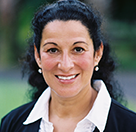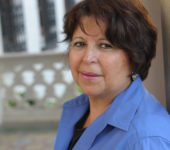• by Adela Solís, Ph.D., and Rosana Rodríguez, Ph.D. • IDRA Newsletter • June – July 2006 •

Excellence in teaching is essential for student success. Current educational research informs us that poor teacher quality affects student learning more than class size, per-pupil spending or socioeconomic status. Furthermore, teacher quality especially affects minority and economically disadvantaged students, many of whom are English language learners (National Commission on Teaching and America’s Future, 1996; Chauncey, 2005). Excellence in the education of English language learners cannot be achieved without equity. But equity is not possible when teachers are unqualified and in short supply (Menken, 2000).
Addressing the shortage of highly qualified teachers of English language learners in Texas was the goal of IDRA’s Bilingual Education Collaborating Alliance, an accelerated teacher preparation project funded by the federal Transitions to Teaching program (from 2001 to 2005). Developed and managed by IDRA, BECA served the south and central regions of Texas.
BECA’s goal was to recruit eligible bilingual-bicultural professionals from fields other than education and to train them for certification in bilingual education and English as a second language education.
From the beginning, the project executed a formula for success that combined equity principles and specific strategies to confront the teacher shortage and quality challenges facing Texas schools.
As a result, BECA succeeded in creating new pathways toward reform in bilingual and ESL teacher preparation, informing the development of accelerated routes to the certification of professionals whose language expertise and passion were suited precisely for English language learners.
Project Design and Innovative Strategies
The BECA project had these unique features:
- Grounded in IDRA’s mission to create schools that work for all children;
- Organized as a three-way collaborative between school districts, universities and IDRA to facilitate comprehensive needs assessments and service delivery;
- Crafted as an accelerated, alternative route to certification designed for efficiency without compromising quality;
- Offered university-based training that stressed rigorous academic preparation and a teaching internship;
- Tailored to address schools’ needs for specific types of teachers (bilingual and ESL) at specific grade levels;
- Offered support to new teachers via mentoring and assistance to ease first-year anxieties, build confidence beyond the first year, extend skills and promote teacher retention;
- Engaged unique recruitment efforts that broadened traditional approaches to target top-notch bilingual professionals, both U.S.-born and foreign-educated;
- Timed recruitment for early identification of a large candidate pool and employing criteria to spot teaching potential and commitment to serve culturally and linguistically diverse students;
- Engaged community at the local level to assist in recruiting students, defining learning needs and promoting understanding of students’ deep culture; and
- Aligned content with state standards for teacher preparation and certification.
Program Strategies
The unique implementation of the program is highlighted below.
Recruitment – This strategy included: (a) a three-way partner collaboration in recruitment that reached Spanish-speaking professionals working within schools; (b) outreach via partners’ web sites and local media advertisements that tapped a variety of bilingual professionals in and out of state; and (c) school district job fairs and word of mouth among new teachers and university students that reached recent college graduates.
The net result was a large pool of potential candidates with outstanding and relevant skills.
Training and Preparation (University Coursework) – Coursework was taught through collaborating university teacher preparation programs. These were 18 to 24 credit hour programs, with a balanced curricula in bilingual/ESL theory and pedagogy, where non-bilingual/ESL courses (i.e., reading and early childhood) further infused diversity strategies.
As a result, school administrators considered teachers highly qualified. And teachers themselves felt well prepared and highly qualified.
Professional Development – First-year teacher interns were provided additional professional development. IDRA added more in the form of pláticas (group discussions and sharing).
This resulted in a highly successful application of both theory and pedagogy.
Mentoring and Test Support – Candidates received mentoring coordinated by the three partners, who together assessed instructional needs and targeted precise support in the classroom (as opposed to after school or during planning periods). Candidates were consistently provided test taking support via large group sessions and one-to-one tutoring.
This effort resulted in about one third of the teachers passing the certification exam on their first try and more than half of the teachers feeling supported and well prepared even after four years.
Accomplishments and Recommendations
Progress and final evaluation data from BECA yielded the following results.
- Seventy-two professionals were certified and placed as highly qualified bilingual and ESL teachers in Texas’s high-need schools.
- New teachers were satisfied with the BECA experience and recommended to other professionals a transitioning to a teaching career in bilingual and ESL education.
- A BECA recruitment process and a three-way collaborative approach to recruitment that resulted in a significant pool of eligible candidates.
A university-based program that was deemed by school administrators as a more effective approach for preparing teachers in bilingual/ESL theory and pedagogy and for linking teacher preparation to classroom practice.
- Professional development offered by the school districts and IDRA that was recognized as a strong source of instructional support.
- A mentoring and support system that was effective, especially for teacher candidates who were evaluated beforehand by school supervisors and found to be in great need of support.
- School administrators who considered BECA teachers as highly qualified.
- After four years, a cadre of BECA teachers still teaching in high-need schools.
As a result of the knowledge gained from BECA, IDRA compiled the following recommendations for improved practice within accelerated programs of bilingual/ESL teacher preparation.
- Early identification and recruitment of candidates can enhance the number and quality of candidates for alternative route certification programs.
- Collaboration in recruitment among school districts, institutions of higher education and community is more effective than going at it alone in identifying alternative pools of teacher candidates – those who are experienced, culturally competent and with better understanding of language-minority children.
- It is worthwhile to assess early the specific language needs of non-native teacher candidates (English non-natives and Spanish non-natives). This provides an opportunity for intensive language development.
- University preparation is an important part of scholarly training and professional development and, when coupled with other strategies, can prepare candidates to be excellent teachers of English language learners.
- An intensive, well-rounded and culturally relevant curricula can be delivered both through courses and professional development offered through the teacher preparation program.
- Teacher assessment (to determine institutional needs) is more comprehensive and accurate when conducted collaboratively by school superintendents, administrators, mentors and coaches.
- Mentoring should be timely, done inside the classroom and be targeted to specific needs.
IDRA’s involvement in preparing teachers for minority student education over the years has confirmed that the quality of teachers placed in classrooms has a profound effect not only on students’ lives, but also on the economy and quality of life for all the nation’s citizens. It has further revealed that colleges and universities together with schools and the community have a pivotal role in effective teacher preparation (Rodríguez and Villarreal, 2005).
Collaborative efforts for bilingual/ESL teacher preparation should aim to make all aspects of the program relevant to the language and cultural realities of the students while also infusing rigor in pedagogy. IDRA’s BECA project is an excellent example of this type of effort. With its design grounded in equity and its innovative recruitment, training and support strategies, it met the challenge of English language learner teacher shortages and teacher quality needs head on.
With the end of the BECA project, IDRA has incorporated the design and learnings into two newer Transitions to Teaching projects: T-TExAS and Transitions. See www.idra.org for more information.
Resources
National Commission on Teaching and America’s Future. What Matters Most: Teaching for America’s Future (New York, N.Y.: National Commission on Teaching and America’s Future, 1996).
Chauncey, C. (Ed.). “Recruiting, Retaining, and Supporting Highly Qualified Teachers,” Harvard Education Letter Spotlight Series (Cambridge, Mass.: Harvard Education Press, 2005).
Menken, K. Ensuring English Language Learners’ Success: Balancing Teacher Quantity with Quality (Washington, D.C.: National Clearinghouse for Bilingual Education, 2000). http://www.ncela.gwu.edu/pubs/tasynthesis/framing/5teacherquality.pdf
Rodríguez, R., and A. Villarreal. “Effective Teacher Preparation – An Action Agenda,” IDRA Newsletter (San Antonio, Texas: Intercultural Development Research Association, May 2005). See also IDRA Newsletter (June-July 2005, Page 2).
Adela Solís, Ph.D., is a senior education associate in the IDRA Division of Professional Development. Rosana Rodríguez, Ph.D., is director of the IDRA Division of Community and Public Engagement. Comments and questions may be directed to them via e-mail at feedback@idra.org.
[©2006, IDRA. This article originally appeared in the June – July 2006 IDRA Newsletter by the Intercultural Development Research Association. Permission to reproduce this article is granted provided the article is reprinted in its entirety and proper credit is given to IDRA and the author.]



